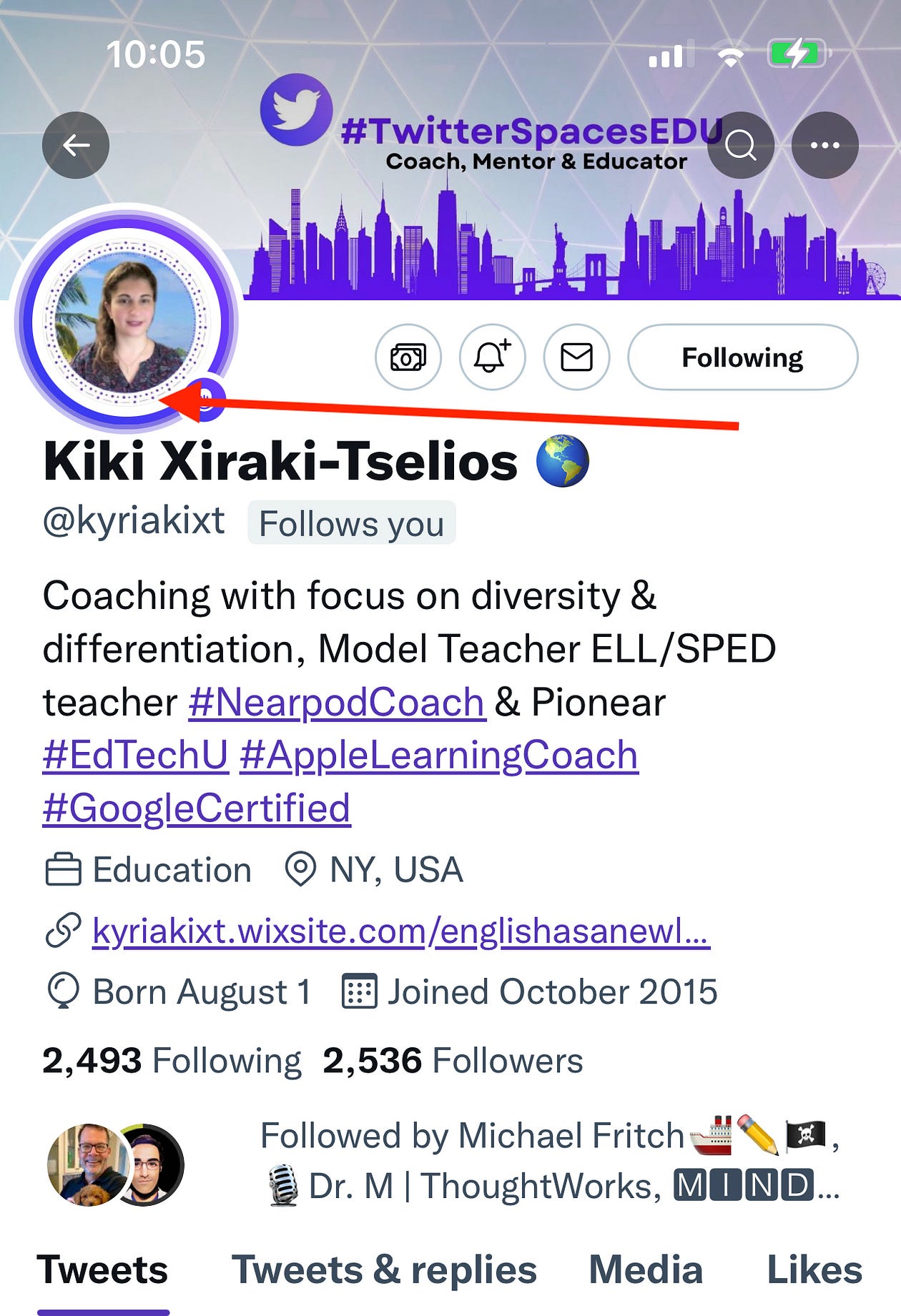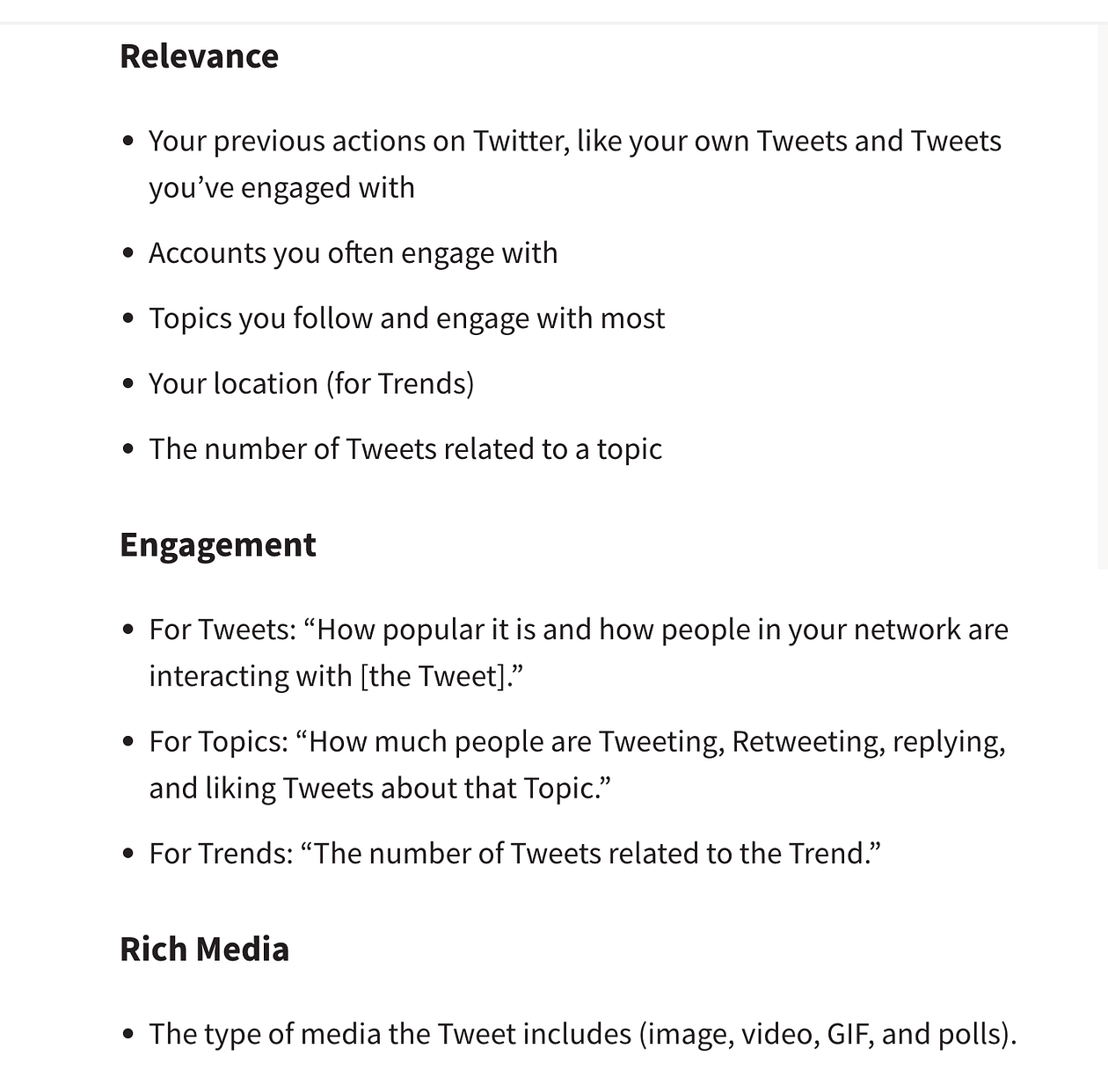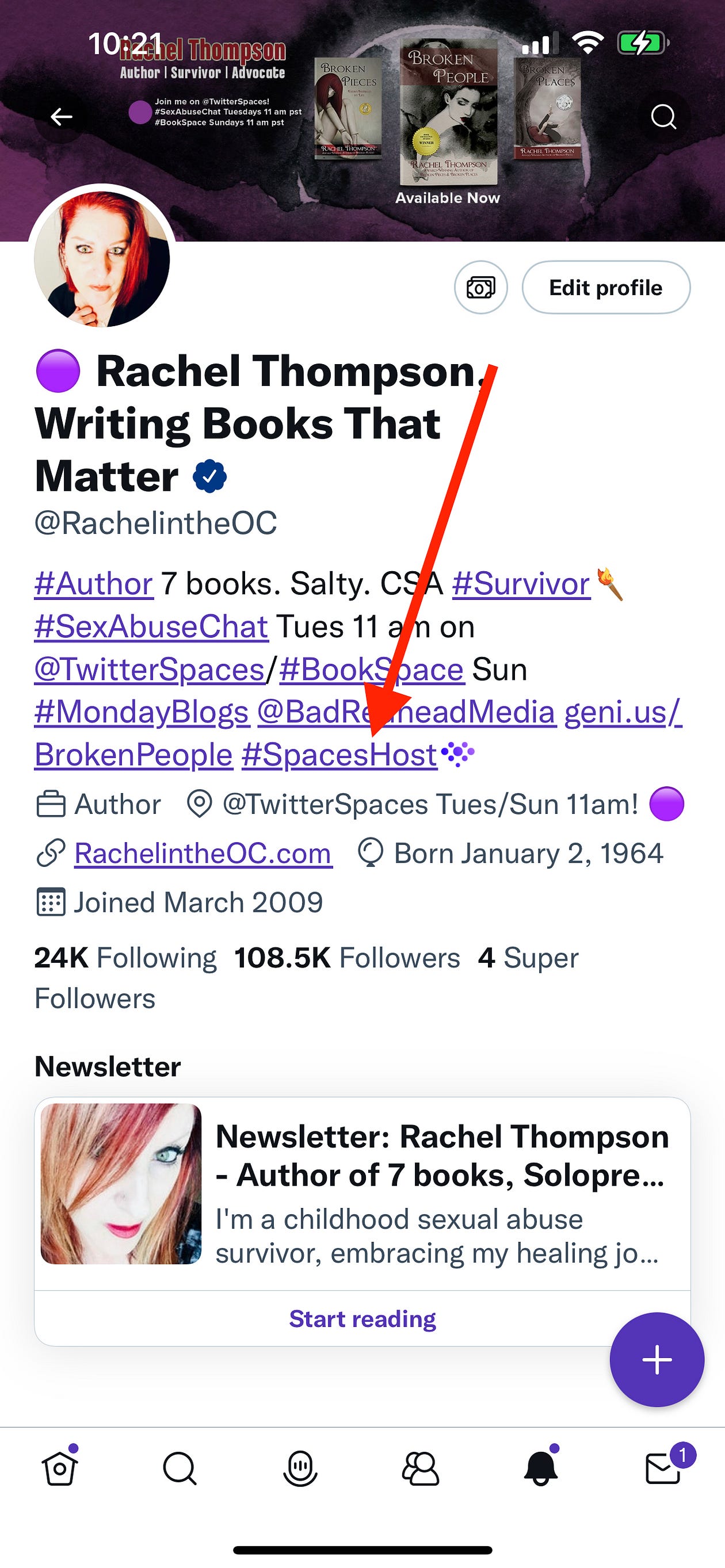Here Are 10 Top Tips For Hosting Twitter Spaces!
Are you confused by this whole ‘social audio’ concept?
Let’s Dig In.
What Is Twitter Spaces Again?
Have you heard of ‘social audio’? Before you say no, I bet you have. Clubhouse started during the pandemic and lit a fire under Twitter with this mission: How can we employ the same tactics as Clubhouse but inside the Twitter app itself?
And that’s where Twitter Spaces was born. Millions of people meet daily on Clubhouse, Spaces, YouTube, and other traditional routes such as Discord. Even Spotify and LinkedIn are now in the social audio space. What I love about Spaces is the ability to hear people’s voices on topics I’m interested in without the bother or discomfort of video plus, my demographic is built-in — meaning you don’t have to build your base from scratch.
While both platforms offer many of the same features, Twitter Spaces has a broader reach. The platform has over 200 million monetizable daily active users, compared to Clubhouse’s reported 4.9 million daily active users (via Twitter Help Section).
I prefer Spaces over Clubhouse or other social audio platforms — Twitter has verified both of my Twitter accounts with over 200K+ followers. Trying to build that from nothing on these different platforms is a tremendous amount of work when I already have many engaged followers on Twitter. Work smart.
Note: You don’t need a Twitter account to listen to Spaces. If you want to speak, though, you will need an account. Why? To cut down on spammers. They also require you to have 600 followers before you can host.
As writers who need to market our work, I’ve found Spaces to be a fantastic generator for connection, relationships with readers, and increasing my visibility, all of which can lead to sales.
Hosting Spaces has created several key outcomes:
- I’ve sold more books
- My followings have grown exponentially.
- I’m networking with amazing, talented people (some below).
- Gained new clients!
![]()
Twitter Spaces for Writers:
Learn more about how writers can benefit from Spaces here:
How to start hosting? What do you do when you get there? Is it confusing and technical? Let’s discuss.
How To Start Hosting Twitter Spaces
The best way to learn any new tech is to do it. We learn by doing, right? I’ve discovered so many amazing people via Spaces and look forward to continuing to be a host for a long time. Social audio became incredibly popular over the pandemic, and even into 2022, continues to grow.
To get your feet wet, I recommend clicking on the 
You enter a Space you’re not hosting in listener mode. That’s the default. If you’re worried about speaking, that should hopefully ease your mind. If you want to jump into host/cohost, however, here are tips I’ve gleaned from several top Spaces hosts, which I present to you now in no particular order:
- 1Have A CoHost
- 2Use the Mute Button, If Needed
- 3Schedule and Promote Your Twitter Spaces
- 4Establish Your Twitter Spaces ‘Norms’
- 5Manage the Room
- 6Learn the Twitter Spaces Lingo
- 7Manage Your Speakers
- 8Timing of Your Twitter Spaces
- 9Look at Attendees’ Bios
- 10Additional Tech NOT Required
- 11Okay, One More: Analytics
1. Have A Cohost
This is probably one of my biggest learnings — if you’re hosting, you’re likely doing most of the speaking (e.g., I interview writers and businesses). This makes posting tweets in the nest (at the top of the Space — more below) challenging, so a cohost can watch who’s coming in and out, vet requests/grant speaker requests, and more.
You can have up to two cohosts in every Space. Hosts and cohosts have the unique ability to gate-keep speaker requests. Most people are pretty respectful of the Space and don’t ‘dive-bomb’ to ‘spam’ their comments all over the Space.
Additional advice from top Spaces host Samantha Postman:
- Record your spaces so that you can repurpose your show to post as a podcast or audio file embedded on your website. You can add audio clips to your socials using apps like Headliner and Descript. You can also use Otter to edit your spoken words into social posts and blogs. Or curate research from your speakers (Twitter is adding a ‘podcast’ option soon, which will allow for more significant opportunities to save and repurpose our Spaces).
- Recording also creates better quality spaces because speakers are more prepared and articulated (they pre-think their responses a bit more, and they are less likely to overshare)
- Recording also reduces trolls and extreme political ranters
- Invite a cohost: Teamwork makes the dream work in Spaces
- We cohosted your Broken People book launch, and between the two of us, we were able to handle the tech, facilitate the audience well, and communicate in backchannels with DMs and each other, plus several hundred guests!
- Keep each other’s energy high and positive.
- Draws on both of your audiences to increase attendance (yours and a cohost or guest)
- Create a group DM backchannel before the Space for the host/cohosts and invited speakers to make coordination a breeze.
2. Use The Mute Button, If Needed
While most people are mindful about their speaking time, you may not know some of the folks requesting the mike, so don’t feel obligated to allow them to speak if you’ve vetted them (checked out their profile) and still have concerns. There are built-in safety features.
There is a fail-safe option if the person speaking isn’t what you’re hoping: click the ‘mute everyone’ button (you can only see this when you’re a host or cohost). You can also boot them from the Space and even block them if they’re offensive, which prevents them from entering your future Spaces.
Worth noting: most people who dive-bomb (meaning they enter and immediately request the mike to say whatever — often self-promote) leave if you don’t grant them immediate mike access, which lets the issue take care of itself.
As you can have up to ten speakers (in addition to yourself and two cohosts), don’t feel bad if you have to cut someone off. Our job is to moderate and facilitate so our listeners and guests have a great experience. If someone gets upset because you haven’t given them the mike (e.g., they DM you about it), stick to your guns. Your Space, your rules.
That said, people do sometimes want to feel heard and validated. Use your better judgment to create a warm, welcoming, and safe environment.
3. Schedule And Promote Your Twitter Spaces
This isn’t difficult, yet it requires some elbow grease. We can schedule our Spaces on the mobile app, yet only one at a time per account. This is unfortunate because I run two weekly Spaces from my author account. Therefore, I can’t schedule my next Space until I hold the scheduled one.
When you schedule a Space, Twitter Spaces generates a URL that you can share. Click on the “share via” option to invite people, groups, or communities.
The benefit? You can share the Space on your timeline, in DM, or in your communities (more below), allowing people to ‘RSVP.’ People can now add your Space to their calendars on iOS and Android and even set a reminder that shows up on their timeline when you start.
A tip from top Spaces host Donna Jennings, Ph.D.:
- Create a visual for each Space along with the scheduled URL, and share both. If you’re unfamiliar with how to do this (you can create a visual and share ANY event, by the way), use whatever visual creation app you use (e.g., Canva), then click on the Twitter Ads option (from desktop, click More…and then Twitter ads).
You can share your visual and even run an ad if you want (e.g., when I had an NYTimes bestselling novelist as my guest, I promoted the Space for $20).
4. Establish Your Twitter Spaces ‘Norms’
Every host runs their Spaces differently. If you’re unsure how to run yours, look at Twitter Spaces in the Twitter Help Section for basic pointers. As for more top tips from veteran Space users, read these from educator and musician Daniel Roeder:
- Establish the modality at the beginning, and for new spaces, post some norms in the nest (“Nested Norms”) — Will it be open mic? Will it be informational? Is there Q&A at the end? Can speakers place things in the nest? Are you recording?
- All these details may seem like minutia, but attending to each makes for a smoother flow.
- If the conversation starts going sideways and for some reason becomes tense, take the reigns sooner than later. Setting expectations is important — the best spaces are safe spaces where everyone feels heard and validated.
- Setting clear expectations and then maintaining them as hosts keep people coming back. If something negative happens in a Space, attendees won’t remember all the details, and they will remember how you handled it.
5. Manage The Room
As a host (and/or cohost), we control who we allow to speak. How to decide? Completely personal choice. Because I want my Spaces to feel safe for attendees, here are my recommendations:
- If the topic is controversial, you have the option not to record it, and this can encourage people to be more open and honest and, more importantly, feel as if my Spaces are SAFE Spaces.
- Vet every speaker. People often jump into Spaces to launch a monologue of self-promotion, politics, or religion, and I don’t vibe with that, so I don’t allow someone on the mike when they enter the room and request to speak.
These tips from Dr. M are also beneficial:
- More speakers on the panel and more open mics at any given time (only a possibility when people are monitoring, or listening, through headphones or earbuds to prevent feedback) are algorithmically favored.
- When doing a Space (interview, for example) where you don’t plan on allowing any speakers up until some time later, do allow trusted/larger accounts or accounts that run Spaces regularly up to the speaker panel with the understanding that they won’t speak until later. They will draw people into the Space as speakers more than they will as a listener.
- Never allow the vibe of a Space to turn negative or downgrade in any way for the sake of one person being allowed to express themselves. It’s a disservice to many in return for one person’s freedom of expression.
If folks aren’t calling on you to speak when, as a guest, you request the mike, it’s okay. Follow that person and attend that Space more than once, and don’t ask for the mike until you’ve listened for understanding and topic.
We are under no obligation to allow people to speak in our Spaces; some hosts allow anyone and everyone to speak, which can make for a hectic and challenging Space. Ultimately, it’s up to you how to effectively manage the room.
6. Learn The Twitter Spaces Lingo
Understanding the terms people use about Spaces can make a world of difference in your ability to participate. Here are some key terms:
- Room = the Space you’re hosting or entered
- Nest (or Jumbotron) = you can share tweets in the Space placed at the top of the Spaces module.
- Mike = microphone
- CC = closed captioning. If you’re hearing-impaired, this option is a wonder.
- Voice = the voice recorder option is helpful if you’re sight-disabled.
- Scheduling a Space = when you schedule a Space (on mobile only for now), Twitter generates a URL (link) we can share. Once you finish the scheduling, you can share the Space in many different places. I send the URL to myself via Airdrop (on my MacBook Pro), making it easier to share.*
*We can only schedule one post at a time per account. You don’t have to schedule your Spaces — you can click on the + button on mobile, hold it for a second, and the room opens.
- Communities = we all have the option to request a community we run from our account, and you can learn more here. This is a great feature to connect people with similar interests. For example, you can join my #BookMarketingChat Community here.
- Purple circle = when anyone is LIVE in a Space, a purple circle appears around their avatar (mobile and desktop). Users are also adding the purple circle emoji to their names and bios.
Also: I’ve been hosting #BookMarketingChat on my @BadRedheadMedia Twitter timeline for many years now. What’s NEW? Adding a weekly #BookMarketingChat Twitter Spaces! Super easy to join: just click on my Twitter avatar at 11 am pst/2 pm est every Wednesday and listen in.
is social audio, meaning no video; and no requirement to speak unless you want to. Once you join (mobile app is easier at this point), you are in default listener mode and you need to request to speak.
7. Manage Your Speakers
When people are new to Spaces (and somewhat nervous), they may ramble when you allow them to speak. Heck, even I do that sometimes. As a host/cohost, it’s our job to help people speak and allow others to speak. When someone is rambling, what to do?
Few things George Silverman recommends:
- Announce the topic (focused, not just the area), usually in the form of a question we are trying to answer.
- Announce the current mode: Q & A, briefing, interactive discussion, COP, brainstorming, etc.
- Don’t let people ramble, but don’t use muting unless the person is obnoxious. Interrupt them and ask for clarification, a headline, a single sentence summary of their point, etc.
- Ask people, “Who wants to expand on Harry’s point?” which is an easy redirect or reframe to help keep the conversation moving.
- INSTANTLY stop any inappropriate behavior. “We’re not doing that here ….”
- When someone comments constructively on someone else’s comment, say, “I want to encourage what Joe just did. He commented on what Jane said, and I find that this building on each others’ ideas gives us a deeper conversation. So, thanks, Joe.”
8. Timing Of Your Twitter Spaces
What’s the best day and time to hold a Space? That’s yet to be decided; however, keep in mind when scheduling that the majority (over 50%) of people in the US live on the east coast.
Regardless of which date or time you choose, the most important tactic you can use is to be consistent. Spaces are a popular feature, so your bio, tweets, and Spaces will rank higher than someone not participating by participating and hosting consistently.
And remember, consistency is a massive part of our personal branding. You can read more here:
Why Branding Confuses You and How To Fix That Right Now
And, according to Hootsuite, there are algorithm benefits as mentioned above:
I hold all my Spaces at 11 am pst/2 pm est, making it easy for people to remember (and me, too). You’ll need to try different times to see what works best for you.
9. Look At Attendees’ Bios
When a Space goes live, you’ll see a purple bubble above your timeline (on mobile only). You’ll also see a purple circle around anyone currently in a Space. Here’s what that looks like (featuring my lovely friend, Kiki Xiraki-Tselios):

When Kiki leaves the Space, that circle disappears. This is a fantastic feature because it allows you to see which of your friends and followers are currently in a Space, and you can click into the Space right from that purple circle.
As a listener, you can react to the audio content in the Twitter module using emojis, sending a tweet or DM, or even request to speak.
Many Twitter hosts will place a 
Here’s my bio so you can see what I mean:
10. Additional Tech Not Required
I was very concerned I wouldn’t be able to host Spaces because I don’t have a professional mike or other fancy equipment. Then I learned: you don’t need to purchase special equipment! All you need is a phone.
I set my iPhone to speaker mode and crank up the volume. As I sit close to my phone — it’s on a stand on my desk — people can always hear me and me them.
Tips from the Twitter Spaces team:
- If your audio goes in and out, try turning off your phone’s Wi-Fi.
- Also, if you’re a speaker, cohost, or host, be sure to mute yourself when not speaking to avoid any background noise that can interfere with sound quality.
- If you’re sitting close to your computer and have the sound on, there may be an echo, so be sure to turn down the volume on your computer when speaking in a Space.
- Turn on the captions option. Why? Captions make the conversation more accessible and inclusive for people worldwide.
- And, if your captions are on, you can get a transcript of everything you said after ending your Space. Twitter retains the recording and transcript of your discussion for safety reasons. Having a transcript can help you revisit the conversation and repurpose the discussion.
If you want to purchase additional tech to help your sound, feel free; however, that’s not required to be an effective host/cohost.
11. Okay, One More: Analytics
And finally, analytics. How many people does your Space reach? How many listeners? What’s your ‘stickiness’ (how long people stay) ranking?
Look at the analytics. I pay $9/month for direcon analytics, which allows me to see what’s what during the Space. Very helpful. They do offer a free plan as well. (I’m not an affiliate — I like the software.)
I learned how to run my own Spaces by visiting many different Spaces as a listener only. Also, this is a good guide on the basics. Read here from Social Pilot.
This is the top piece of advice I can give you: as Nike says, “Just do it.” That’s how we learn.
Did I miss anything? Please share below in the comments!
Have you signed up for my newsletter yet?




